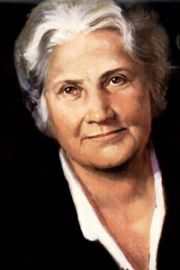About Montessori
In traditional schools, students generally follow the same basic curriculum, and work on the same assignments, regardless of each individual child’s skill level. The much more individualistic Montessori approach, on the other hand, groups students together based on their developmental stages instead of their age or grade. The Montessori classroom is a place for collaboration between student and teacher, thereby leading to the development of self-awareness, enthusiasm, and concern for others, at a young age.
Several key characteristics of the revolutionary Montessori Method are highlighted below:
Several key characteristics of the revolutionary Montessori Method are highlighted below:
- Emphasis on cognitive structures and social development.
- Teacher’s role is unobtrusive; child actively participates in learning.
- Environment and method encourage internal self discipline.
- Individual and group instruction adapts to each student’s learning style.
- Mixed-age grouping.
- Children encouraged to teach, collaborate, and help each other.
- Child chooses own work from interests, abilities.
- Child formulates concepts from self-teaching materials.
- Child sets own learning pace to internalize information.
- Child spots own errors through feedback from material.
- Learning is reinforced internally through child’s own repetition of activity, internal feelings of success repetition.
- Multi-sensory materials for physical exploration development.
- Organized program for learning care of self and the environment.
- Child can work where s/he is comfortable, move and talk at will (yet doesn’t disturb others); group work is voluntary and negotiable.

The Montessori methods were first introduced in the early 1900's by Italian physician, Dr. Maria Montessori.
Dr. Montessori wrote, “The most important period of life is not the age of university studies, but the first one, the period from Birth to the age of Six.”
Montessori thought is that if we want self-directed children, we can not have teacher-directed classrooms. If the desired end product is independent thinking, the means must be independent learning. Therefore, the goal of early childhood education should not be to fill the child with facts from pre-selected courses of studies, but rather to cultivate his/her own natural desire to learn.
Dr. Montessori wrote, “The most important period of life is not the age of university studies, but the first one, the period from Birth to the age of Six.”
Montessori thought is that if we want self-directed children, we can not have teacher-directed classrooms. If the desired end product is independent thinking, the means must be independent learning. Therefore, the goal of early childhood education should not be to fill the child with facts from pre-selected courses of studies, but rather to cultivate his/her own natural desire to learn.
